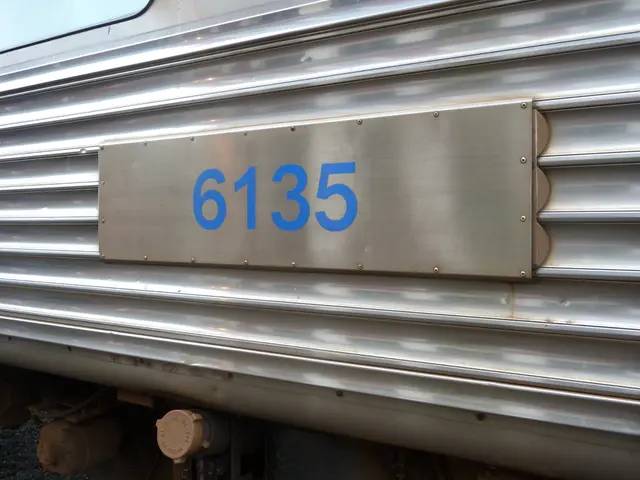In the Korn Ferry Tour, merely ten caddies are truly earning a living and managing to cover their expenses. A seasoned veteran, a 35+ year looper, discusses the genuine realities of being a professional caddie.
The life of a caddie can shape up to be a real gold mine, like what caddie Ted Scott bagged alongside Scottie Scheffler in 2024. Scheffler's show-stopping performances pocketed an impressive $55 million, with Scott netting a cool $5.5 million - a sum that would have landed him comfortably in the top 17 on the PGA Tour money list for that year.
But it's not all champagne and finesse. As Kenny Harms, a veteran looper, explained in an exclusive chat with Golf Monthly, the grind is real. Harms, who's carried the bags of heavy-hitters like Hale Irwin and Lee Trevino, and teamed up with Kevin Na for a fruitful 16-year partnership, knows the ins and outs of caddying.
Starting on the LPGA Tour back in 1991, Harms acknowledges that the caddie world isn't a walk in the park, especially when the golfer needs to rack up those wins just to stay afloat. On the Korn Ferry Tour, only about 10 caddies are making a profit, he explained, with the rest finding it tough to cover their costs.
Even on the PGA Tour, the story isn't much different. Half the players are missing the cut, Harms pointed out, and the competition to make a living is fierce. "Nobody realizes that if you don't have a great player, it's hard to make a living," he revealed.
If you're lucky enough to find a player to caddie for, the financial struggles don't necessarily end there. In 2022, Geno Bonnalie, Joel Dahmen's caddie, shared a glimpse into the not-so-glamorous living arrangements at the AT&T Pebble Beach Pro-Am, tweeting that he and three other bagmen had to share a room to save costs. And this is far from being an isolated case - according to Harms himself, "when I started caddying, we often had four guys in a hotel room to save money."
Things aren't smoother when it comes to the cost of travel. Despite the rise in salaries over the years, travel expenses have also soared, making it a challenging balancing act. "I was making $300 a week and now the salaries are $1,500 plus. But you're spending $1,500 on travel," Harms lamented.
On the Korn Ferry Tour, the prize purse stands at a million dollars, with the winner raking in $180,000. Caddies typically take home 10% for a victory, translating to an $18,000 payday. Even those who finish inside the top 10 earn around 7%, which amounts to $25,500 for a 10th-place finish. That might sound like a substantial amount, but it leaves the caddie with just $1,785 for their weekly work.
Life as a caddie is no picnic, and finding employment is half the battle. "When I left (the LPGA Tour in 1991), it was very difficult to get a job. I tell everybody 'if you really want to be a professional caddie, you need to go to the Korn Ferry Tour,'" Harms cautioned. "It may even be the case that nobody's going to know who you are. You're going to go and sit in that parking lot for maybe six to eight weeks, but you better plan on having $1,000 a week because, in that time, you might get lucky and you might get a job."
After a successful 35-year-long career, which included five wins with Kevin Na, Harms parted ways with Na in August 2024, marking the first time he had ever been fired from his role as a caddie. Currently, Harms is taking a break, but his dreams of returning to the game haven't waned. "If somebody can work in their profession, do what they love to do and wake up that morning, it makes the job so much easier. I was very blessed for all those years and golf has been amazing to me. Who knows what will happen next? I might go back, or I might do something else, we'll just have to wait and see."
Struggling to Make Ends Meet
Caddies on the Korn Ferry Tour often find it challenging to make ends meet due to several factors:
- Variable Income: Their income fluctuates significantly based on the golfer's performance and the events they participate in.
- Limited Job Security: Caddies can be hired and fired at any time by the golfer, which makes long-term planning difficult.
- Expenses: Travel and living expenses while on tour can be substantial, affecting their net earnings.
Job Insecurity
Job insecurity is another critical challenge for caddies:
- Dependence on Golfer Performance: Their employment and earnings are directly tied to the golfer's success and decisions.
- Limited Long-Term Contracts: Most caddies work on a weekly or event-by-event basis, with few having long-term contracts.
- Competition: The number of aspiring caddies can be high, making it competitive to secure consistent work with successful golfers.
While working as a caddie can offer rewards, the financial and job security challenges are significant, especially for those not working with high-performing golfers on the PGA Tour.
Caddies on the Korn Ferry Tour, despite their closeness to the PGA Tour, face financial difficulties due to the unpredictable nature of their income and the high competition for consistent work. With income largely based on the performance of their golfer and the events they participate in, and job security being uncertain due to being hired and fired at the golfer's discretion, caddies often struggle to make ends meet. Additionally, high travel and living expenses while on tour can further strain their earnings. These challenges, coupled with the need to find employment in a competitive field, make the life of a caddie far from easy, even if they are associated with sports like golf and sports-betting.







